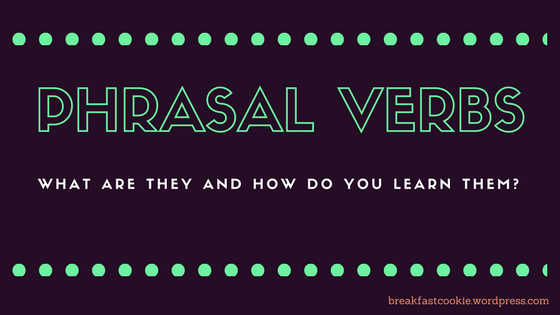Five Tips to Learning Phrasal Verbs

The most common frustration I hear from English learners is how difficult it is to learn phrasal verbs. They are almost non-exisistent in other languages, and so I am always getting requests to write how to learn them.
First of all, what is a phrasal verb?
Verb + adverbial OR prepositional particle
| VERB | PARTICLE |
| agree | with |
Why are they so difficult to learn?
You might know the meaning of the verb and the particle when they are used independently, however when used together this changes the meaning. Also, I know how difficult prepositions can be in English!
Some tips for learning phrasal verbs
- Learn them like a single expression – not each word independently
- Use them in full sentences
- Remember them with images, stories or actions
- Find an example from your life to apply them in context
- Group them by common particles and you may notice some of the verbs have the same meaning – for example:
- “bump into” and “run into“
- “hold on” and “hang on“
- “sort out” and “iron out“
- “rely on” and “count on“
Phrasal verbs are very commonly used in both formal and informal English, so it’s important to not avoid them and it’s the best way to get familiar with prepositions!
